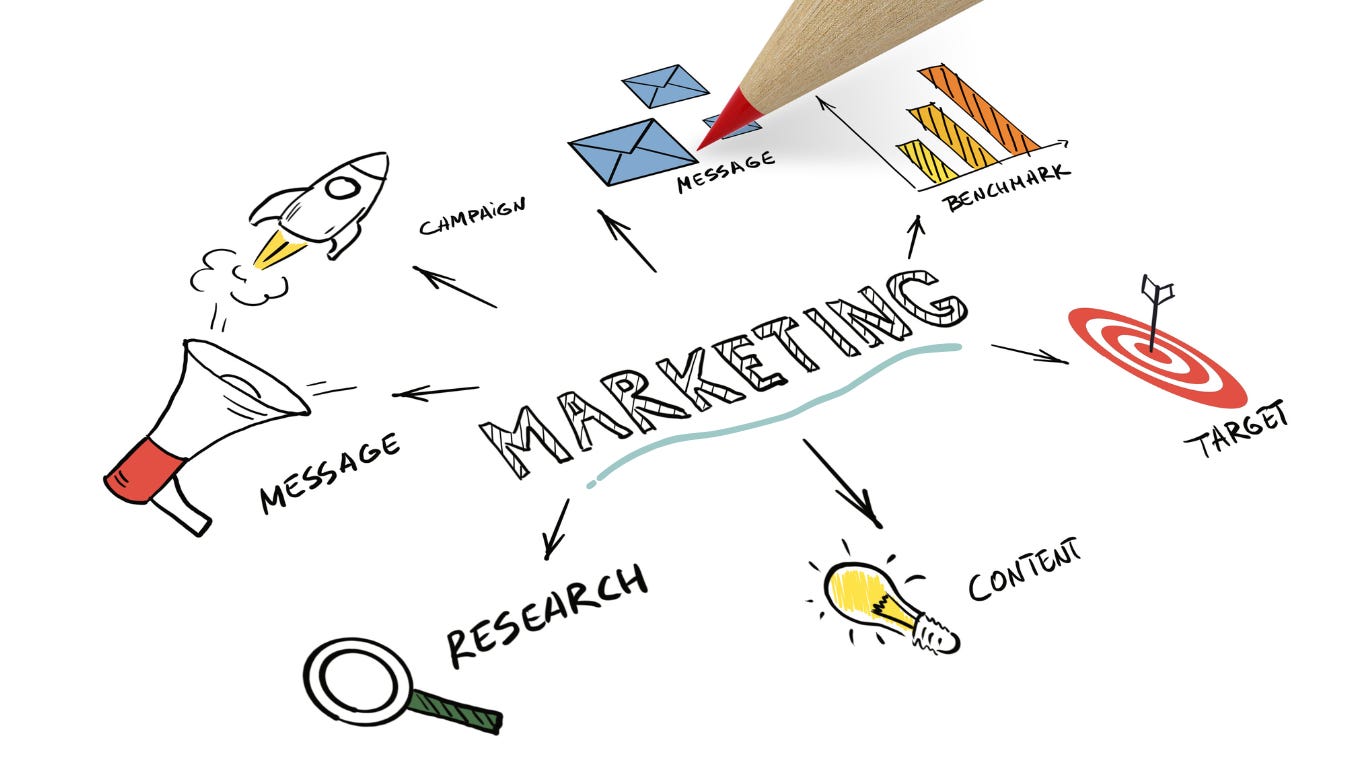Sales Is Dying
When was the last time you were sold anything?
I really want you to pause and think about this. When was the last time you were sold something in the traditional sense? Let me take you on a journey through the evolution of sales to show why "Sales Is Dying" isn't just a catchy phrase—it's a reality that's reshaping how we do business.
The Street Vendors Era
Remember the days when a salesman would knock on your door, eager to sell you home cleaning powders, watches, or maybe a new water purifier? Think back to when hawkers and salespeople would stroll through neighborhoods with carpets, bedsheets, and utensils, ready to demonstrate their goods right in your living room. These were the days when selling was personal and direct. People gathered, tested products, and made purchases based on trust and the vendor's reputation.
Those days are largely gone. Nowadays, we rarely see those door-to-door salespeople. The only street vendors we encounter are those selling vegetables and fruits, often from a cart. And there's a reason for this: freshness and cost-effectiveness. My mom still buys her veggies from these vendors because they're fresh and cheaper compared to supermarket options. Plus, these vendors source their goods directly from farms, bypassing the middlemen.
The Rise and Fall of Telesales
Then came the era of telesales. Remember those phone calls you'd get, offering everything from insurance policies to travel plans and mobile SIM cards? I've had my share of experiences with telesales—some good, most bad. I once signed up for a mobile SIM and a credit card through these calls, only to find out later that the salesperson's pitch was less than truthful. Those were frustrating experiences.
And then, as if to combat the flood of unwanted sales calls, Caller ID and spam-blocking technologies emerged. I use 'Truecaller' and Apple's 'Silence Unknown Callers' to filter out unwanted calls. If I see a call tagged "Insurance Spam - Reported by XX users," I'm unlikely to answer, let alone make a purchase.
Let me give you another example. I received a call from Salesforce, trying to sell me their CRM. They knew I used HubSpot and had a well-prepared pitch with a long list of features. But here's the thing: I didn't need those extra features. I had already invested time in setting up HubSpot to meet my needs. Why would I switch just because of a sales call? It's like someone trying to sell you a new car when you're perfectly happy with the one you've just bought and customized.
Here's a fun analogy: Imagine if you had a spouse who's beautiful, caring, and loyal. Now, picture getting a call from a matrimony site offering to replace her with someone who speaks Spanish and can multitask. It's not just irrelevant; it's downright absurd. That's what telesales can feel like—irrelevant and intrusive.
The Omnichannel Approach: The New Frontier
The omnichannel approach was meant to blend traditional sales tactics—calls, emails, texts, LinkedIn messages—with newer methods like website contact forms, voicemails, and even postcards. For a while, it seemed like a good compromise. It was especially useful for startups needing quick results to survive. You had to use every channel available to get noticed.
But let's be honest: the effectiveness of this approach is waning. Many so-called sales experts advocate for this method, claiming it's the key to success. But here's the catch—they don't use these tactics to promote themselves. You see them on YouTube, LinkedIn, or in their newsletters, not using the omnichannel approach they're selling.
It's like a vegetarian claiming to have built muscles through a vegetarian diet while promoting a Chick-fil-A sandwich. The irony is impossible to ignore. The art of selling—where you push and persuade—is reaching its limits.
Here's a thought: Today, buyers fall into two categories. One group knows they need a product or service and is deciding which one to choose. The other doesn't even realize they need it. Each group requires a different marketing approach to address their unique needs.
Marketing: The New Sales
Marketing is emerging as a more effective strategy than traditional sales methods. Unlike sales, which often involves interrupting and pushing, marketing is about attracting and engaging. It's a pull strategy rather than a push one. This shift aligns perfectly with modern consumer preferences.
Building Trust
Today, trust is crucial. People want to feel confident in their purchases, and they're more likely to trust a brand that provides valuable, relevant content rather than one that aggressively pushes sales. Building trust involves educating your audience, addressing their pain points, and positioning your brand as a thought leader in your industry.
Think about it: when you see customer testimonials, reviews, and case studies, they serve as social proof, reinforcing trust in your brand. This reduces the perceived risk of a purchase. On the flip side, aggressive sales tactics can erode trust. People don't like feeling pressured or manipulated; they prefer to make informed decisions on their own terms.
Increasing Visibility
If people can't find your product or service, it's almost like it doesn't exist. SEO plays a critical role here. If you're not showing up in search engine results, you're missing out on potential customers who are actively looking for what you offer.
Social media is another key player. It allows for real-time interaction and helps build a community around your brand.
Through online advertising, including PPC campaigns and display ads, you can target specific demographics and drive traffic to your website or landing pages.
The Shift from Salesperson to Consultant
As marketing takes on a larger role in driving sales, the role of the traditional salesperson is evolving. No longer are salespeople just deal-closers; they are now consultants or advisors.
Today's customers are well-informed by the time they reach out to a salesperson. They've done their research, compared products, and narrowed down their options. Salespeople are now there to guide them through the decision-making process, offering insights, advice, and solutions tailored to their specific needs.
Think of it this way: Instead of being a pushy salesperson, you become a trusted advisor who helps customers make the best decision. This requires a deep understanding of the customer's business, challenges, and goals. By providing personalized recommendations, you can build stronger relationships, leading to higher customer satisfaction and greater sales success.
Steps for Transitioning to a Marketing-Led Approach
So, how do you transition from a sales-driven to a marketing-led approach? Here's a step-by-step guide:
1. Conduct a Gap Analysis
Start by assessing the alignment between your sales and marketing teams. Identify any gaps or inefficiencies in their collaboration. Examine lead quality, sales follow-ups, and consistency in messaging.
2. Evaluate Current Marketing Strategies
Review your existing marketing strategies. This includes content marketing, SEO, social media efforts, and online advertising. Analyze key performance indicators (KPIs) like conversion rates, customer acquisition costs (CAC), and return on marketing investment (ROMI) to see what's working and what needs improvement.
3. Develop Customer-Centric Content
Creating high-quality, customer-centric content is crucial. This content should be informative, relevant, and tailored to your target audience's needs. Develop a content strategy that includes various formats such as blog posts, whitepapers, videos, podcasts, infographics, and case studies.
4. Optimize SEO and Social Media
Ensure your online presence is optimized for search engines. This means using relevant keywords and creating valuable content. On social media, maintain a consistent presence and engage with your followers. Use analytics to track engagement and refine your strategy based on what resonates with your audience.
5. Implement a Service-Level Agreement (SLA)
Establish clear roles and responsibilities between sales and marketing teams through a Service-Level Agreement (SLA). This formal agreement ensures that both teams are aligned and working towards common goals.
6. Encourage Open Communication and Shared Goals
Hold regular meetings, such as weekly or bi-weekly syncs, to discuss progress, share insights, and address challenges. Review key metrics like lead quality, conversion rates, and sales pipeline status to ensure alignment.
7. Utilize Marketing Automation and CRM Systems
Leverage marketing automation tools to streamline tasks like email marketing, lead nurturing, and campaign management. Use Customer Relationship Management (CRM) systems to manage customer data, track interactions, and support sales efforts. A CRM system provides a comprehensive view of each customer's journey, from initial contact to post-sale engagement.
Conclusion: Embracing the Future of Sales
The sales landscape is evolving rapidly. Traditional sales methods are becoming less effective as consumer behavior shifts and technological advancements continue. To thrive in this new environment, businesses must integrate marketing and sales efforts, leveraging advanced technologies like marketing automation, CRM systems, and data analytics.
The future of selling lies in marketing. By shifting the focus from pushing products to creating meaningful connections and delivering value, businesses can build stronger relationships with their customers, foster loyalty, and achieve long-term success. The time to embrace this shift is now. Those who adapt will be well-positioned to excel in the new era of sales and marketing.




